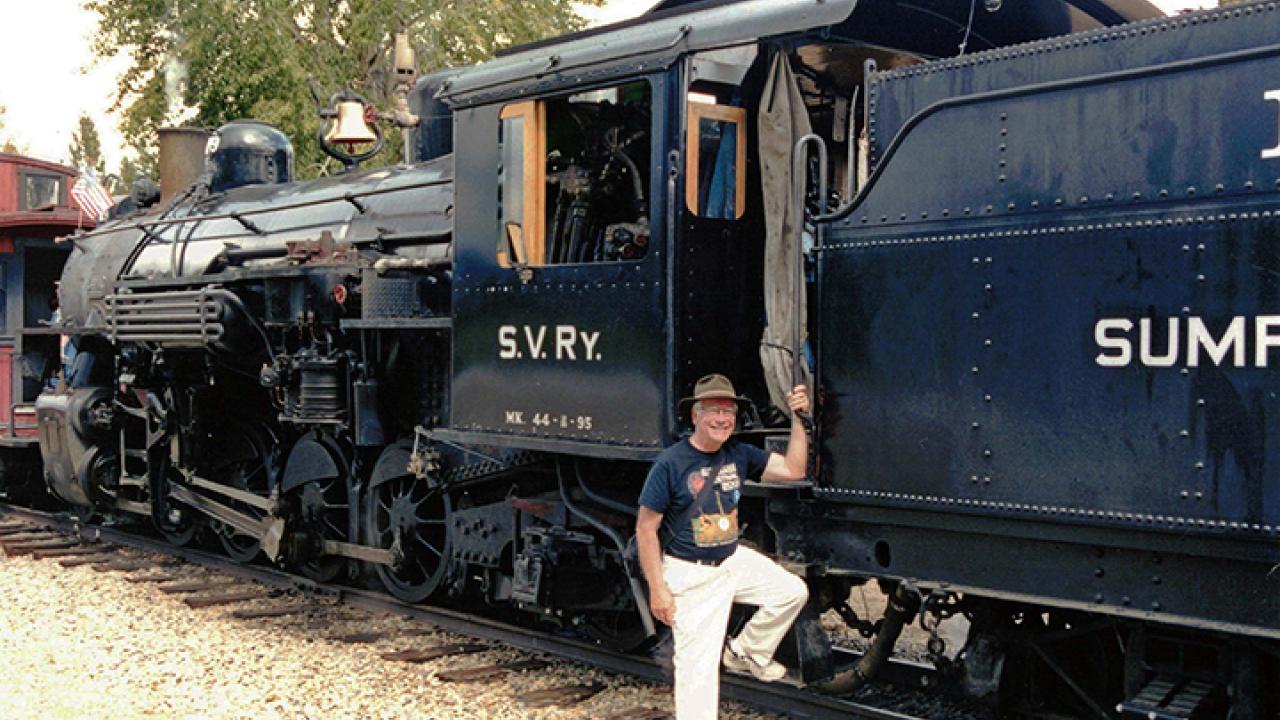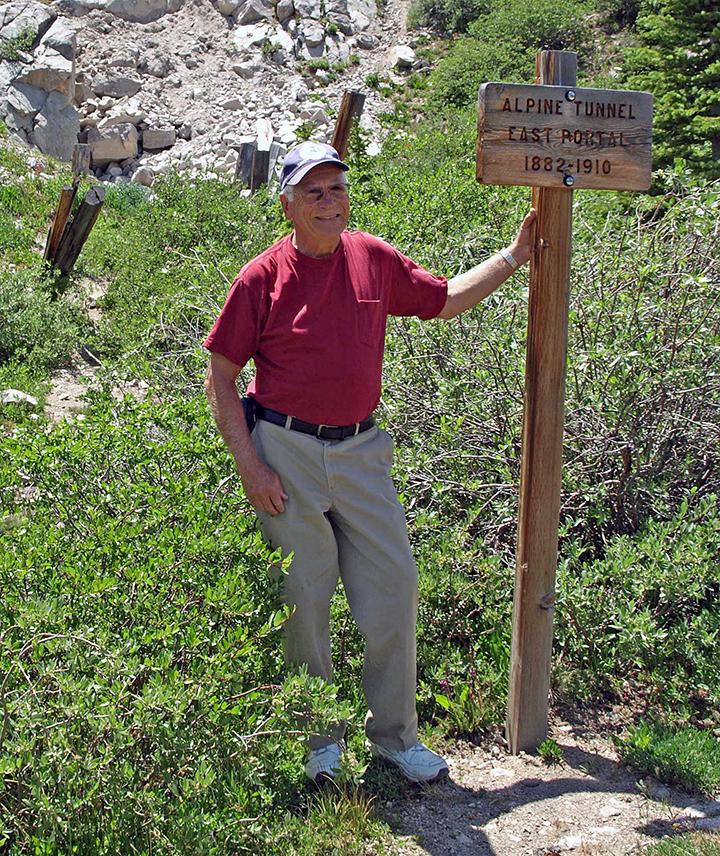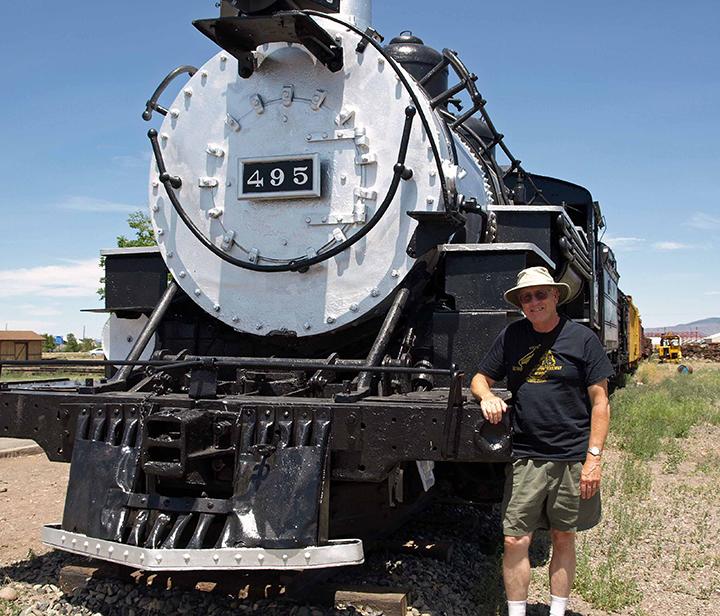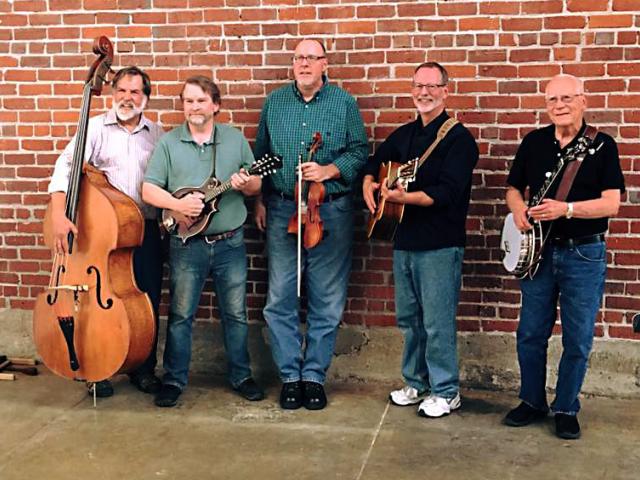
The Late Medical Entomologist Bruce Eldridge, a Licensed Locomotive Engineer, So Loved Trains
Ken Lorenzen: 'Bruce Had an Encyclopedic Knowledge of Just about Everything Railroad'
UC Davis professor emeritus Bruce Eldridge (1933-2025), an internationally recognized medical entomologist whose military, academic and administrative career spanned more than six decades, enjoyed many outside interests. Among them: he played his banjo in bluegrass bands and he loved trains. Eldridge was a dedicated rail enthusiast who took many trips with his friend, Ken Lorenzen. Lorenzen served as a UC Davis staff research associate (SRA) from 1973 to 2004, first at the UC Davis Bee Biology Facility with bee scientists (including Norm Gary); and then at the UC Mosquito Research Program, directed by Eldridge. Later Lorenzen worked at the Bohart Museum of Entomology until his retirement. (See tribute page on the legendary Bruce Eldridge)

Memories of Bruce Eldridge Outside of Work
by Ken Lorenzen
In 1992, after 19 years supporting teaching and research programs at the UC Davis Bee Biology Facility (now the Harry H. Laidlaw Jr. Honey Bee Research Facility), I was moved to the UC Mosquito Research Program in Briggs Hall to work with Bruce. The switch from honey bees to mosquitoes required me to learn a new range of duties and skills, but Bruce was an excellent teacher, dedicated researcher, and all-around nice guy, which made my transition fairly uncomplicated.
When I first spoke with Bruce about joining his program, I noticed a railroad calendar on his office wall. Field trips to collect mosquito larvae in the Sierras, coastal salt marshes, and inland waterways provided opportunities to discuss our mutual interests in railroads, and it wasn’t long before we began planning expeditions together.
Over the years, we explored almost 80 railroads in California, Oregon, Nevada, and Colorado, enjoying “the hunt” for any remaining evidence of long-gone railroads, or visiting sites where current railroads still used the original trackage, buildings, bridges, etc., of predecessors. Bruce would consult his well-stocked library of railroad books as he meticulously planned our trips, and those books always helped us find many of the hidden remnants we otherwise might have missed. Bruce also had an encyclopedic knowledge of just about everything railroad, and each trip we took together was an education for me.
Following an exploration of the South Pacific Coast and Northwestern Pacific Railroads, Bruce and I wrote a series of articles entitled “Tracking Number 20” for Railhead, a quarterly publication of Sacramento Valley Historical Railways, tracing the history of locomotive #20, the engine my grandfather regularly drove for the SPCRR (South Pacific Coast Railroad).
During our 2002 exploration of Oregon railroads, Bruce told me he was part owner of an old Southern Pacific interurban passenger station (turned restaurant) in Corvallis. Why was I not surprised?

Our last railroad trip together was in 2012. My wife and I moved to Williamsburg, VA in 2010, but Bruce was still interested exploring railroads. and suggested we plan a trip to Colorado to explore narrow gauge railroads there. Meeting at the Denver International Airport, we rented a vehicle and the adventure began.
Always on the watch for railroading news around the country, Bruce regularly contributed to a column entitled “Here and There” published in The Review, a bimonthly newsletter of the Bay Area Electric Railroad Association, one of many organizations to which Bruce belonged.
Bruce was a licensed locomotive engineer and served the Yolo Shortline Railroad by occasionally driving excursion train trips from Woodland to Sacramento. He also conducted “car counts” for the line where he would inventory railroad cars temporarily stored on sidings or unused tracks. I joined him on several of those counts.
Bruce was a member of a modular railroading club in Woodland that worked in On3 scale. Each member created a different section of the layout (hence the term “modular”) and I would occasionally help him with his module. From time-to-time, club members would bring their individual modules to model railroading shows held at venues like the Woodland Mall and connect their modules together for display and operation.
An accomplished banjo player (5-string), Bruce was a member of a local band. His son, Ken, playing guitar, often joined the group. They performed bluegrass and gospel tunes at numerous venues in the Davis area and I sometimes assisted the group with equipment before and after performances. Bruce had a great voice and particularly liked gospel songs.
And somehow, amidst all his other recreational activities, Bruce found time to enjoy playing golf with friends.
Bruce was an amazing person in so many respects. I am grateful to have known him and been able to call him my friend, both at work and at play.
(Editor's Note: The family of Bruce Eldridge noted in his obituary, published March 4 in the Davis Enterprise: "During World War II, his mother went to work full-time, so Bruce was sent to his grandparents' chicken farm in Santa Cruz in the summers. During this time, he became fascinated with the trains that ran by the farm. This became a lifelong passion, including serving as a director of the Sierra Northern Railway, and for several years was a licensed locomotive engineer and operated passenger trains in the Woodland area.")

